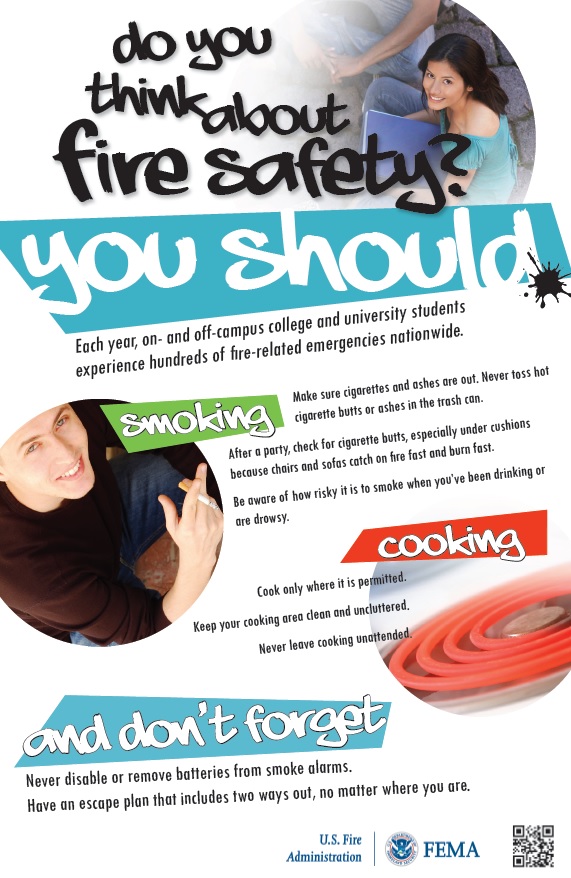
Find more information on FEMA’s Campus Fire Safety Page.
Most campus-related fires occur in off-campus housing, according to statistics collected by the U.S. Fire Administration
. Considering that the majority of the nation’s 20 million college students choose to live in off-campus housing, this puts a significant number of them at risk. Along with a new sense of independence, the college years bring new responsibility, including the need for fire prevention. Training becomes especially important when you consider that the last fire safety training most college students received was in elementary school.
A refresher of some simple, common-sense practices can help students understand fire risks and know the preventive measures that could save their lives.
Protection
- Make sure the building you are living in has smoke alarms in each sleeping area, outside each sleeping area and on each level. It is preferable that smoke alarms are interconnected, so when one sounds, they all sound.
- The building should have carbon monoxide detectors.
- Smoke alarms and carbon monoxide detectors should be tested at least once a month.
- Never remove batteries from smoke alarms or carbon monoxide detectors.
- Make sure there are at least two evacuation routes from the building. All windows and doors should open easily and exit routes should be free of clutter.
- Make sure the address is clearly marked on the outside of the building so emergency personnel can locate you quickly.
Prevention
- Candles should be placed in sturdy candleholders and are never left unattended.
- Candles are an open flame. Be sure candles are kept at least 12 inches from anything that can burn, including curtains and linens.
- Do not overload electrical outlets. Only one heat-producing appliance (for example, coffeemaker, toaster, space heater) should be plugged into an outlet at a time.
- Space heaters should be used only if necessary. Place them on a level surface away from areas where they can be bumped or knocked over. They should be placed at least 3 feet away from drapes, furniture or other flammable materials. Most important – they should never be left unattended or running while you sleep.
- Porches and decks should be clear of upholstered furniture, barbecue grills and fire pits.
- When cooking – stay in the kitchen. Do not cook when tired or under the influence of drugs, alcohol or medication that may cause drowsiness.
- Keep the cooking area clean and uncluttered.
- If you smoke, do so only outside. Use sturdy, deep, non-tip ashtrays. Never throw a cigarette butt in a trash can.
More fire prevention information:
Kitchen a hot spot for home fires, injuries
Correctly placed, working smoke alarms save lives
Escape plans critical to surviving a fire
Carbon monoxide: Combustion’s deadly companion
This loss control information is advisory only. The author assumes no responsibility for management or control of loss control activities. Not all exposures are identified in this article. Contact your local, independent insurance agent for coverage advice and policy service.
